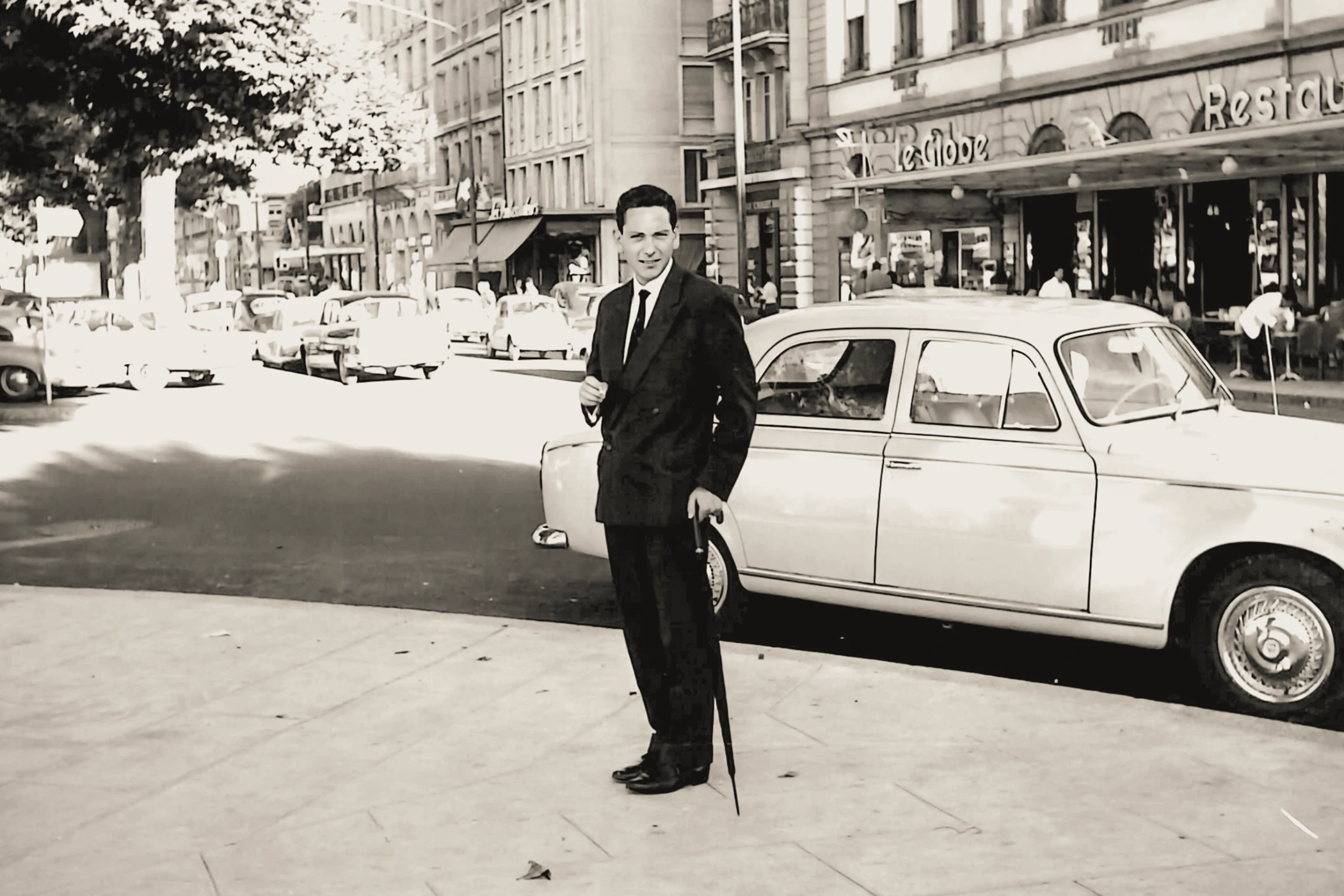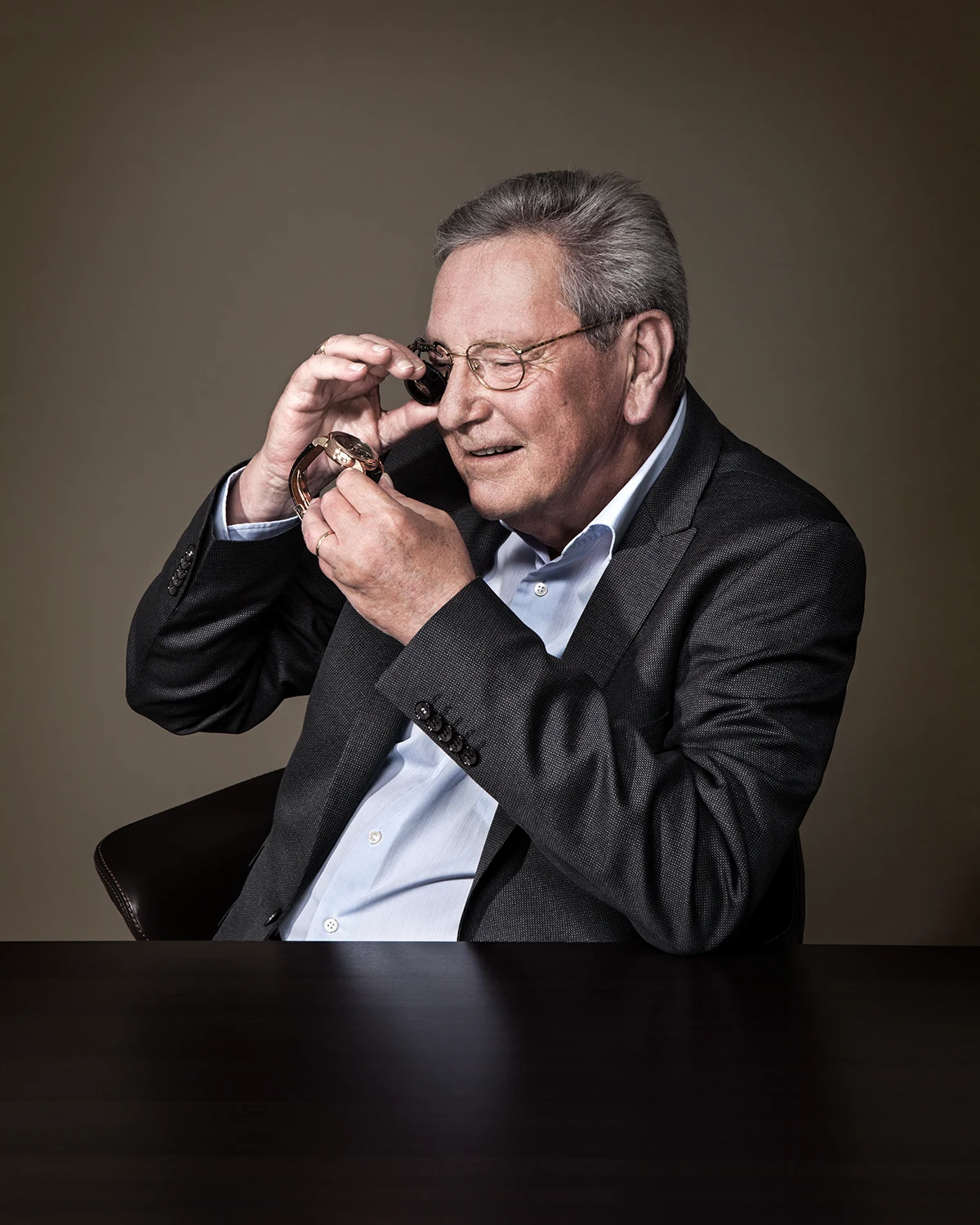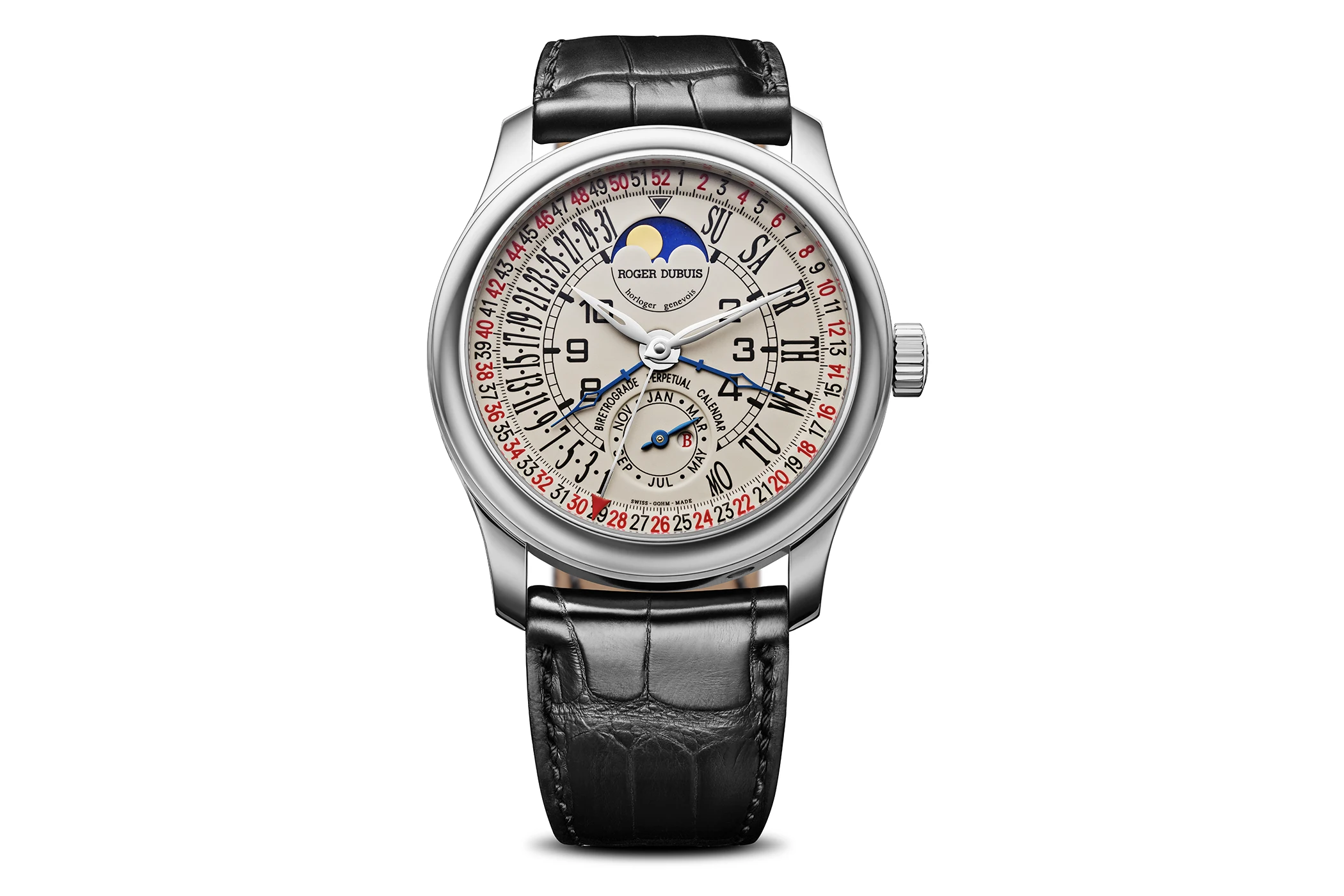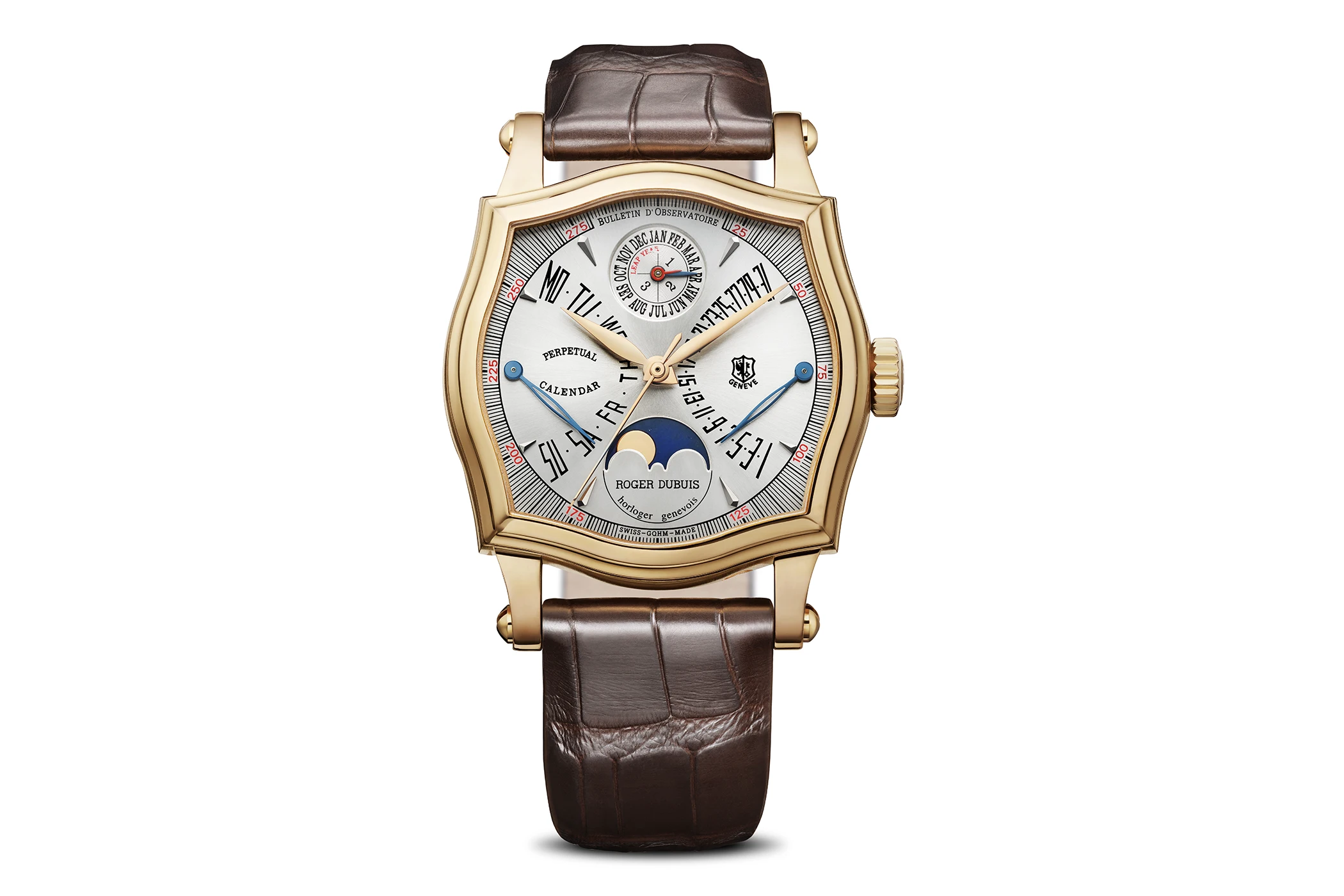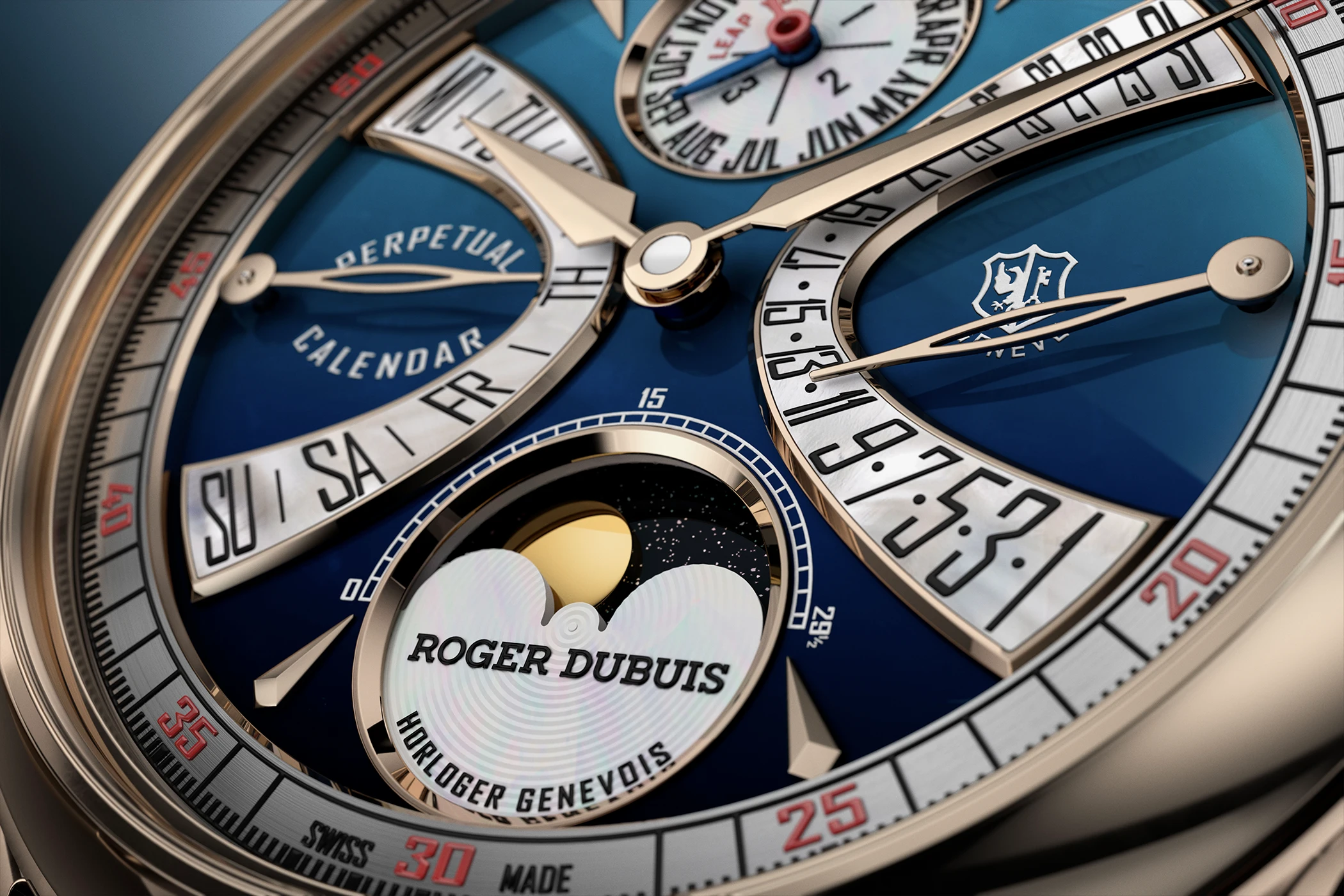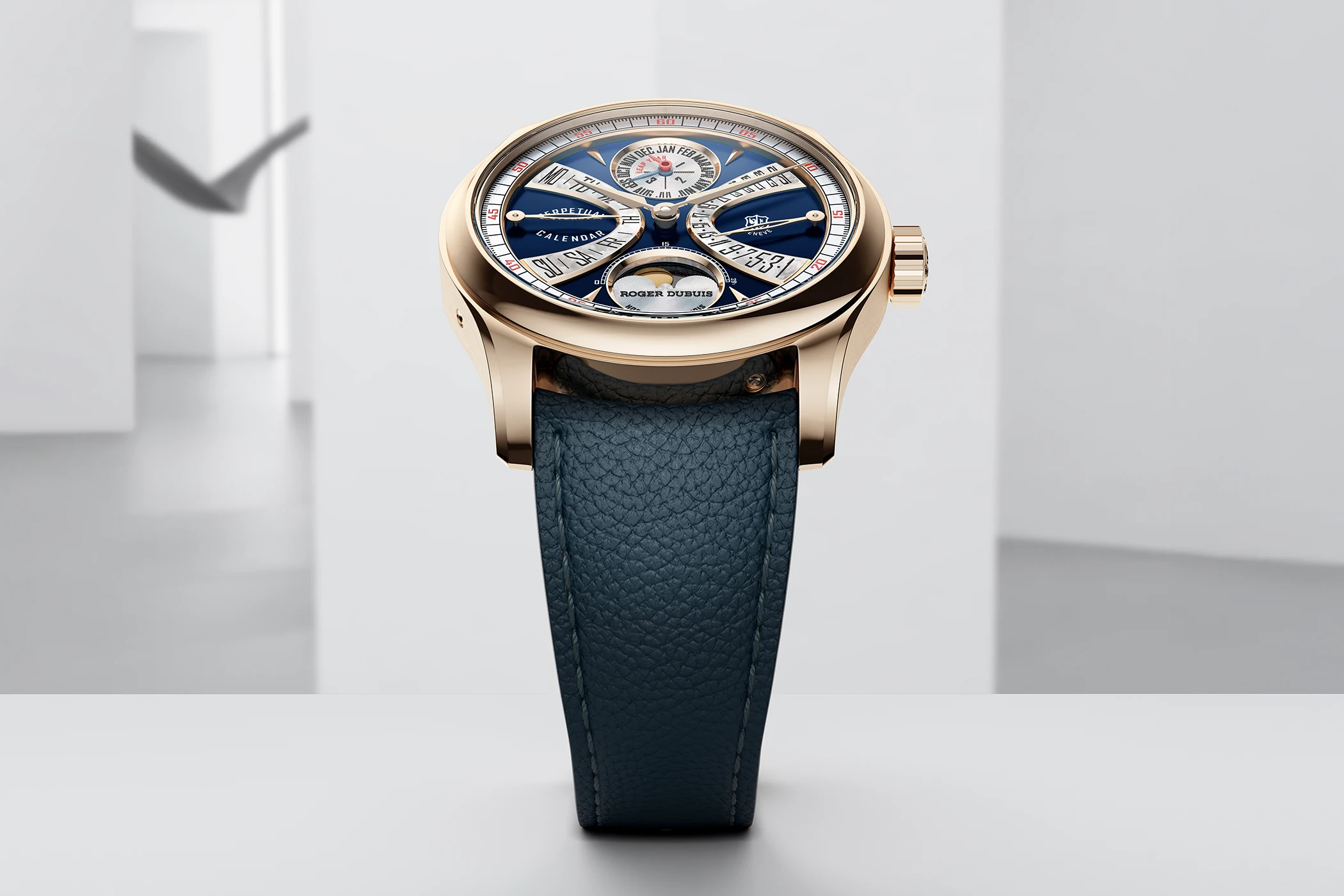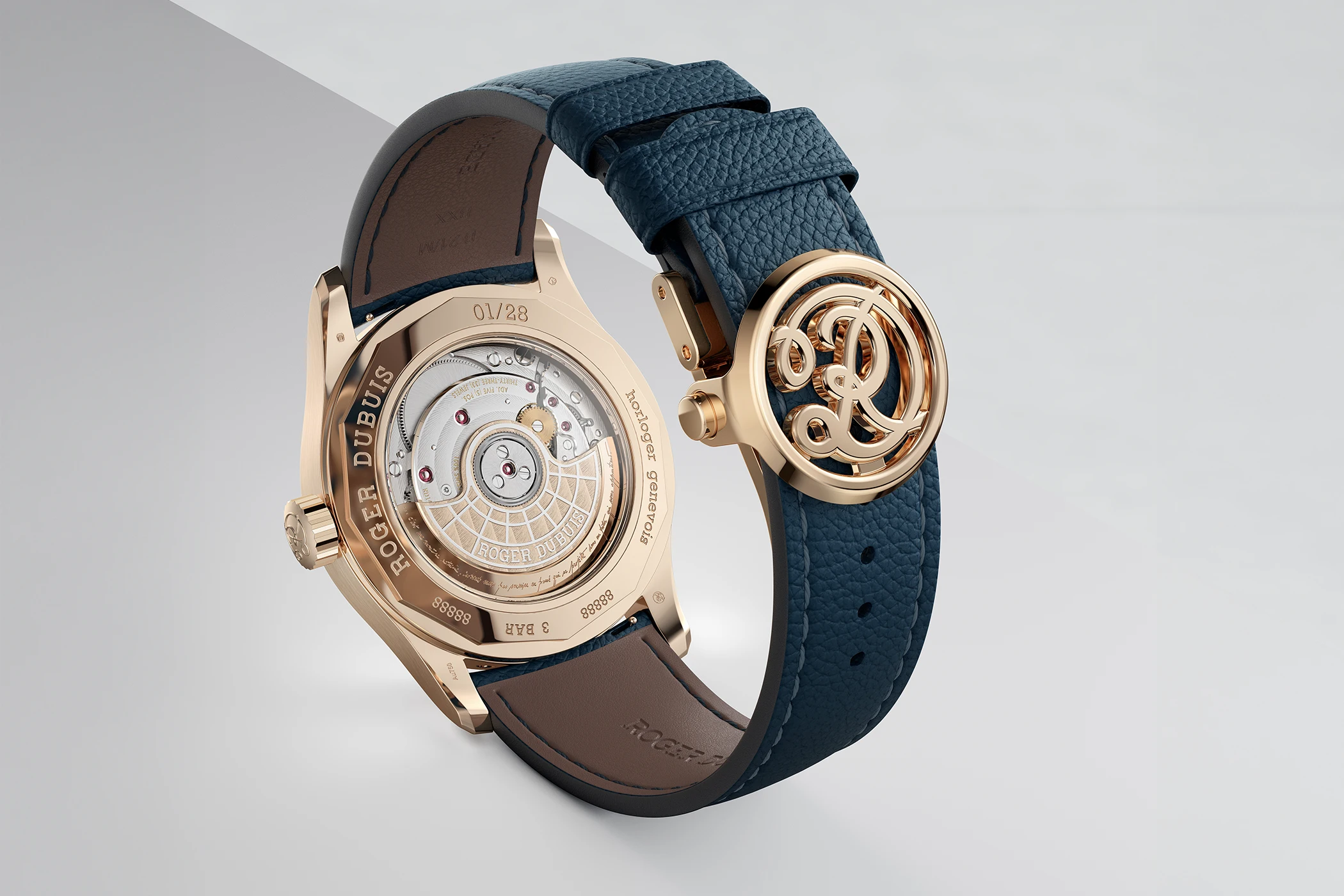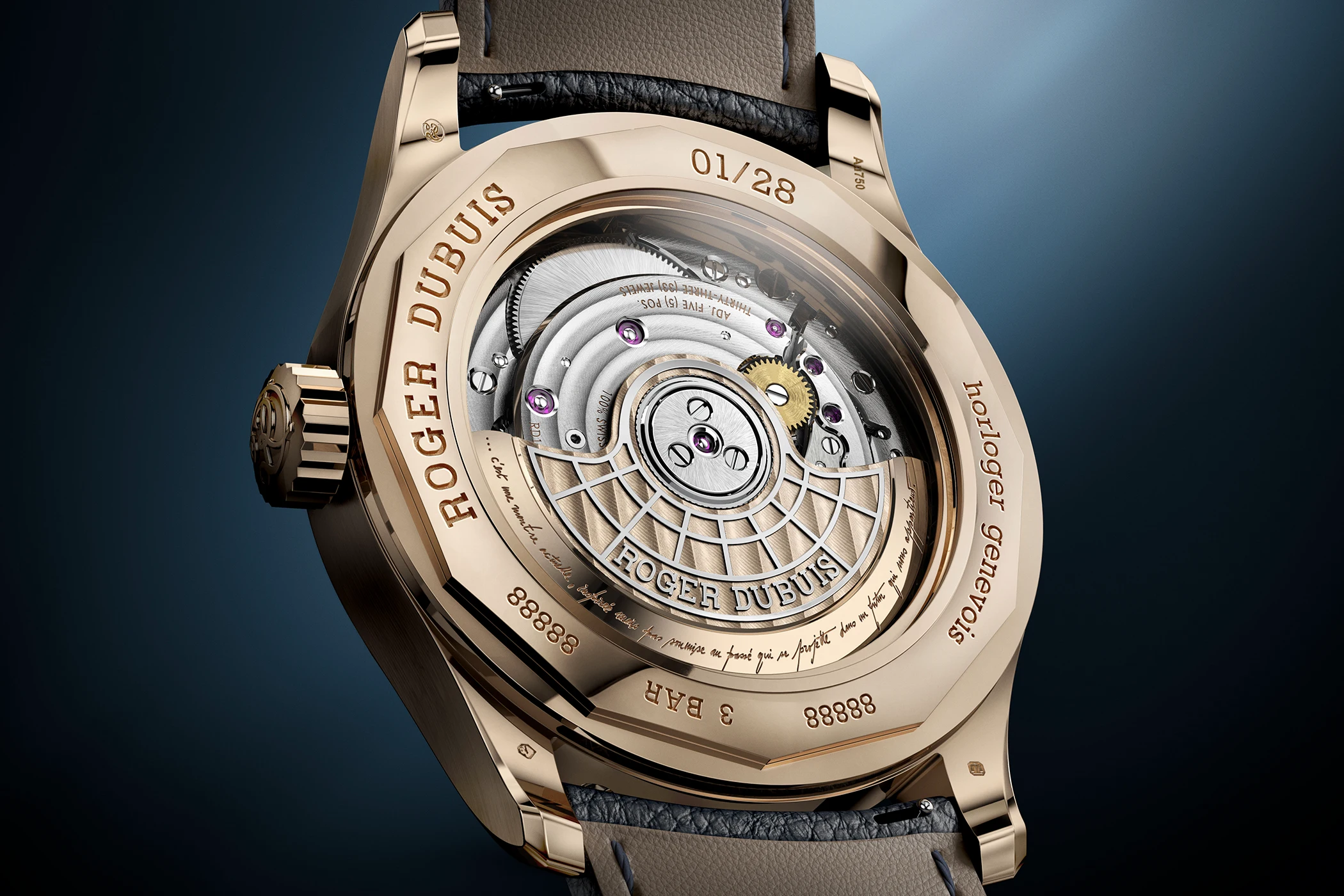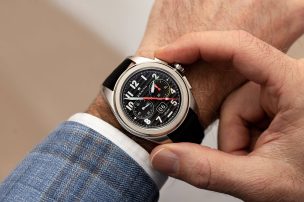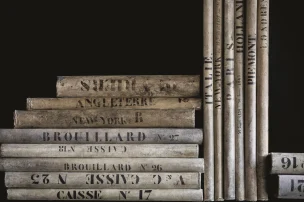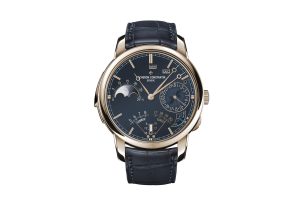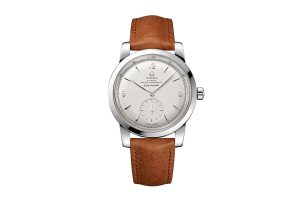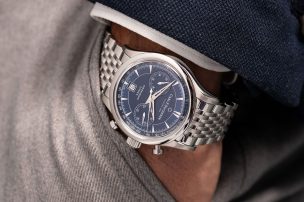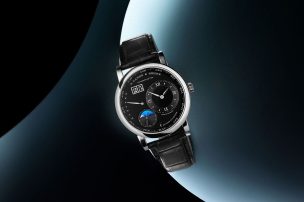

Back to the Roots: With the Hommage La Placide Perpetual Calendar, Roger Dubuis Returns to Its Origins
For its 30th anniversary, Roger Dubuis is taking a look back at its own origins. Earlier this year, two models – the Excalibur Monobalancier Bi-Retrograde Calendar and the Excalibur Grande Complication – had already carried the historical retrograde display into the present day of the brand’s futuristic Excalibur line. With the new Roger Dubuis Hommage La Placide Perpetual Calendar, the manufacture now goes one step further: the model signifies a departure from the motorsport-inspired aesthetic of recent years and a return to the brand’s roots – to the Hommage and Sympathie collections with which everything began in 1995. To mark this milestone, this article not only examines the new Roger Dubuis Hommage La Placide Perpetual Calendar, but also looks back at the history of the company and its founder.
The History of Roger Dubuis
The origins of the Roger Dubuis Hommage La Placide can be traced back to the very beginnings of the Roger Dubuis brand. To understand it fully, one must first look at the story of the man whose name is inseparably linked with the manufacture: Roger Dubuis, who devoted his life to watchmaking.
Born in 1938 in the remote village of Corbeyrier in the canton of Vaud, Dubuis discovered his passion for fine mechanics early on. In 1953, at just 15 years of age, he began his training at the Geneva Watchmaking School, where he was registered as graduate number 208. After completing his four-year apprenticeship, he entered the professional world: his career began in the customer service department of Longines, where he remained for nine years. In 1966, he joined Patek Philippe, dedicating himself intensively to complicated movements until his departure in 1980.
As is often the case, one ending marked a new beginning. Leaving Patek Philippe led to the founding of Roger Dubuis’ own atelier. There, he initially focused on the repair and restoration of various timepieces but increasingly turned his attention to developing sophisticated kadratures—additional mechanisms for existing movements. Another decisive chapter began in the early 1980s, when Dubuis met Jean-Marc Wiederrecht, who would later establish Agenhor, a workshop renowned for highly complex complications. Together with Wiederrecht and his wife, Catherine-Esther, Dubuis founded a small company called P.M.E. (an acronym for Placide—Dubuis’ nickname from his scouting days—Marc, and Esther). Over the following years, the trio developed intricate mechanisms, the most notable of which was the bi-retrograde display system realised around 1983/1984, which attracted considerable attention within the industry.
This invention ultimately culminated in 1989 with a watch featuring a bi-retrograde perpetual calendar, developed by P.M.E. in collaboration for Harry Winston. The timepiece displayed the day of the week and the date on semi-circular scales, with the hands sweeping across each segment before snapping back instantaneously to their starting positions once reaching the end of the arc. It was the world’s first perpetual calendar module with a double retrograde display, built upon an automatic movement supplied by Frédéric Piguet. In retrospect, the professional milestones of Roger Dubuis not only laid the foundations for the later development of his eponymous brand but also served as the key inspiration for its two inaugural collections – Hommage and Sympathie.
The Founding of Roger Dubuis and the First Collections: Hommage and Sympathie
In 1995, the time had finally come: together with entrepreneur Carlos Dias, who had previously taken notice of the talented watchmaker, Roger Dubuis founded the Société Genevoise des Montres SA (SOGEM) in the Geneva district of Carouge – the company that would later evolve into the Roger Dubuis manufacture and brand. For the first collection created under the new venture, Dubuis drew inspiration from his years – and enduring admiration – at Patek Philippe. Aptly named Hommage, the debut line took stylistic cues from Patek Philippe references 130 and 1463 “Tasti Tondi”, yet already carried the unmistakable signature of Roger Dubuis. Strictly speaking, however, the company was not yet a manufacture in the true sense: the early Hommage watches housed outsourced chronograph calibres such as the high-grade Lémania 2310.
With his second collection, Sympathie, Dubuis once again explored the retrograde indications he had originally developed for Harry Winston, this time reinterpreting them within his own design language. The Sympathie Bi-Retrograde Perpetual Calendar employed the very same calendar module that Dubuis and Wiederrecht had once created for Harry Winston, yet its design expressed a perfect balance between traditional watchmaking values and contemporary aesthetics. A key factor in its distinctive appearance was the case itself: unlike the Hommage, the Sympathie Bi-Retrograde Perpetual Calendar featured an unusual case form – a blend between cushion and square – defined by flowing lines combined with sharp inner and outer edges, creating a bridge between classical construction and bold contours. Although Dubuis never confirmed the connection, a little-known Longines model from the 1950s (Ref. 846 5094) is widely regarded as the likely inspiration for the watch’s unique case shape.
As for the dial, Dubuis transferred the exact layout of the perpetual calendar display from the original Harry Winston version to the Sympathie Bi-Retrograde Perpetual Calendar: fan-shaped retrograde indicators for the day of the week and the date occupy the left and right sides respectively, while a display for the month and leap year sits at 12 o’clock, and a moon-phase indication is positioned at 6 o’clock. The early Sympathie models were also fitted with sapphire crystals following the contours of the case, while the varying sizes of the numerals and letters echoed the dynamic geometry of the design. The numerals, narrowing towards the centre, convey a sense of visual distortion reminiscent of watches such as the Cartier Crash or the Berneron Mirage. Watches from the Sympathie collection helped bring the Bi-Retrograde Perpetual Calendar to greater prominence and thus shaped the style of the new creation we now examine in detail.
The New Roger Dubuis Hommage La Placide Perpetual Calendar
Looking back at Roger Dubuis and the brand’s 30-year history, the story truly begins much earlier – in the watchmaking workshops of the 1950s, during Dubuis’ formative years at Longines and Patek Philippe. The watches created after his departure and passing in 2017 – as appealing as they may be – only faintly reflect the original design vision of the brand’s founder.
For its 30th anniversary, Roger Dubuis is once again turning towards its origins. With two watches – the Excalibur Monobalancier Bi-Retrograde Calendar, featuring bi-retrograde indications for the day and date, and the Excalibur Grande Complication, which combines the retrograde display of a perpetual calendar with a tourbillon and a minute repeater – the manufacture continues the long-standing tradition of retrograde indications within the brand’s futuristic, motorsport-inspired Excalibur line. Now, the brand revisits the original layout of the bi-retrograde perpetual calendar, as seen most notably in the Sympathie collection, and translates it faithfully into a contemporary aesthetic.
With the new Roger Dubuis Hommage La Placide, Roger Dubuis marks a return to the design values of its early years and once again pays tribute to the brand’s first collections. However, unlike the original Hommage, which was dedicated to Patek Philippe, this new interpretation honours Roger Dubuis himself. This sentiment is reflected in the watch’s name: La Placide can be understood as a reference to Dubuis’ nickname from his scouting days, which – as previously mentioned – also inspired the name of his earlier venture, P.M.E., and translates roughly as “the calm” or “the serene one.” Thus, it becomes clear that the bi-retrograde perpetual calendar is not merely a chapter of the brand’s history, but a continuing source of inspiration for its future watchmaking direction.
The Dial
The dial of the new Roger Dubuis Hommage La Placide Perpetual Calendar offers the clearest reference to the brand’s history. With this special edition, Roger Dubuis revisits the stylistic codes of its historical Sympathie and Hommage models, giving the dial the distinctive character of that formative era. This is most evident in the execution of Roger Dubuis’ signature bi-retrograde calendar, whose hands sweep across semi-circular arcs before snapping back to zero at the end of each cycle. The scales are broad at the outer edge and taper towards the centre, creating the characteristic sense of optical distortion.
In total, the dial of the Roger Dubuis Hommage La Placide Perpetual Calendar is composed of five layers. The first level features a rhodium-plated, circular-brushed chapter ring with printed red numerals, a minute track, and polished bevels. The second layer comprises mother-of-pearl segments for the calendar indications – the day of the week on the left and the date on the right – each with hand-chamfered edges. The third level, the main plate, is lacquered in a vivid Leman Blue – a reference to Lake Geneva, which Roger Dubuis is said to have admired daily on his way between Geneva and Vevey as a young watchmaking student. Applied hour markers and fine printed moon indications rest on this layer. The fourth layer consists of a mother-of-pearl subdial with a wide, circular-brushed surface and delicate inscriptions for the month and leap-year display. Finally, the composition is completed by the moon-phase indicator: a shimmering blue aventurine glass disc adorned with domed yellow gold moons.
The Case of the Roger Dubuis Hommage La Placide Perpetual Calendar
The case of the Roger Dubuis Hommage La Placide Perpetual Calendar is crafted from 18-carat pink gold (750/1000) and measures 38 millimetres in diameter with a height of 11 millimetres. It features a sapphire caseback that reveals the finely finished calibre RD1472, while also bearing the individual limitation number of each piece – from 01/28 to 28/28. The water resistance is rated at 3 bar (30 metres). The watch is fitted with a blue interchangeable leather strap, secured by a pin buckle adorned with the historical Roger Dubuis emblem.
The Movement
Inside the Roger Dubuis Hommage La Placide Perpetual Calendar beats the calibre RD1472, which combines faithfully reproduced and newly manufactured components from the historical RD14 and RD72 movements. The revised RD14 – one of Roger Dubuis’ first in-house automatic calibres – has been technically recalculated and fitted with a traditional swan-neck regulator. Building on this foundation, the RD72 module adds the perpetual calendar complication favoured by Roger Dubuis, featuring bi-retrograde indications for the day and date, as well as displays for the month, leap year, and moon phase. Two star-shaped wheels with 12 and 48 teeth respectively enable the even progression of the month and leap-year indications via coaxial hands.
The self-winding movement, equipped with an 18-carat pink gold rotor, comprises 307 components and 33 jewels, measures 5.3 millimetres in height, operates at a frequency of 4 hertz, and delivers a power reserve of 48 hours. In total, 15 traditional finishing techniques are applied – ranging from anglage and Côtes de Genève to perlage, tooth and tip polishing, interior and exterior bevels, as well as decorative graining, spiral brushing, frosting, mirror polishing, and bluing – all contributing to the depth and character of Geneva’s fine watchmaking tradition. The calibre of the Roger Dubuis Hommage La Placide Perpetual Calendar bears the Poinçon de Genève (Geneva Seal), which also appears on the dial. Since 2012, the seal’s criteria have extended to the entire timepiece, attesting to both artisanal craftsmanship and chronometric precision.
Availability of the Roger Dubuis Hommage La Placide Perpetual Calendar
Even the number of pieces in the limited edition – 28 in total – draws inspiration from the brand’s own history. The figure refers to the registration number (208) under which Roger Dubuis was listed during his time at the Geneva Watchmaking School. Furthermore, Dubuis released the first models of his Hommage collection in a series limited to 28 pieces, and the hand-wound manufacture chronograph calibre RD28 – which around 1998 marked the beginning of the brand’s manufacture status – also carried this number in its name. The price of the new model in Germany is EUR 140,500 including VAT.

